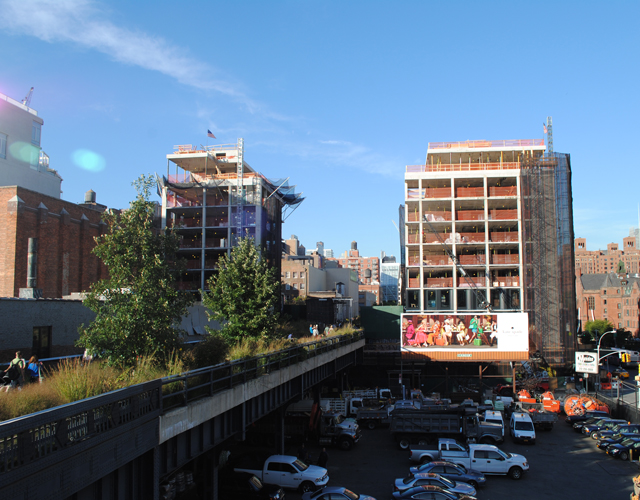On January 19, 1934, Robert Moses was appointed as the first citywide parks commissioner, setting off a wave of unprecedented park-building activity across the city. Orchard Beach, Jacob Riis Park, Riverside Park, Sara D. Roosevelt Park, Juniper Valley Park—the city’s Parks Department completed so many projects under Moses as to make a concise summary impossible.
Eighty years later, the city is once again making heavy investments in new parks, but it’s the city’s Economic Development Corporation that’s taking on many new projects, not the parks department. The High Line, Harlem River Park, WNYC Transmitter Park, Willoughby Square, and the Lakeside Center at Prospect Park are just some of the recent or upcoming projects led by the EDC.
“The EDC has stepped into this role because it is seen as an agency that can get things done quickly and efficiently and that is in contrast to other public agencies,” said Maria Doulis, Director of City Studies at the Citizens Budget Commission, a non-profit budget watchdog. “The problem with that is EDC was not created to do this kind of work. EDC should be focused on enhancing the economy and doing that primarily through the creation of jobs.”
The EDC has taken on the role of parks-builder in part because it technically isn’t a city agency—it’s a non-profit corporation “hired” by the city—and it doesn’t have to abide by the same procurement rules as other city agencies. The EDC can therefore complete projects faster and for less cost than the parks department could.
“It’s not necessarily a question of poor capital management” on the part of traditional city agencies, said Doulis. “There are severe procurement restrictions that really slow down and complicate the way city agencies can do capital projects.”
One culprit, she said, is the a New York state law called Wick’s Law, passed in 1912, that requires city projects to hire multiple contractors for projects with costs greater than $3 million – one each to handle the plumbing, water, and electric. Some say the law is outdated and unnecessary, but it still remains on the books.
Aside from procurement, there are other advantages to having the EDC take the lead. It is positioned to facilitate cross-agency collaboration, as many projects require several agencies to work closely together.
For example, at Queens Plaza in Long Island City, the EDC led a $44 million project to create a new park called Dutch Kills Green, to beautify the streetscape and to construct new pedestrian and bicycle infrastructure. The project required the input, guidance, and approval of the of the departments of transportation, planning, and parks, and local stakeholders, with the EDC coordinating and facilitating the collaboration.
“That’s the thing about agencies, said Dana Frankel of the Long Island City Partnership, the neighborhood’s Business Improvement District. “It’s sometimes hard to know if one is talking to the other. And the EDC, they’re able to bring the parties together, and that’s extremely valuable.”
“We work in close concert with the lead agency and its own capital staff, executing the job and providing expertise, but ultimately deferring to the lead agency for high-level decision-making related to the project vision, timeline and funding,” an EDC spokesperson said.
In many instances, these parks projects are supposed to serve larger citywide goals. In the case of the East River Esplanade, near Wall Street, the project was one facet of a broader economic development strategy for lower Manhattan, originally announced by Mayor Michael Bloomberg in 2004.
At the East River Esplanade, the city’s planning department played a major role, producing a concept plan, and making design decisions (the materials to be used, for instance), but it was the EDC that ultimately pulled the project through it’s various stages, from a lengthy approval process to the hiring of contractors and overseeing the work.
In this way, the EDC is an important tool for the mayor’s office. The city’s Deputy Mayor for Economic Development can identify priority projects or initiatives and set the EDC to carrying them out.
But Doulis at the Citizen’s Budget Commission contends that the EDC should not be diverting its resources to manage capital projects for city agencies, since these projects aren’t directly related to job creation, the EDC’s core mission.
The EDC counters that, in essence, parks should be considered economic development projects. “We work on capital projects that offer an economic development benefit. Broadly, they physically create the amenities and infrastructure that make people want to live, work, and start businesses here,” a spokesperson said.
In Long Island City, “The [Dutch Kills Green] park itself has been completely transformative for the area and very much a driver of economic growth,” said Dana Frankel of the Long Island City Partnership. “At one point this was a completely uninviting parking and heavy-traffic area. It’s like a brand new place.”
The East River Esplanade can be seen as having a similarly significant impact on economic development, helping reactivate the waterfront.
“It’s not that there is no economic development purpose to building parks,” said Doulis, “but there’s an economic development underpinning almost everything the city does. We don’t consider that economic development.” With a broad enough view, maintaining public order or clearing the streets of snow could be considered an economic development activity.
“Obviously, our sense of economic development is broader today, but you’re just sidestepping the problem and giving this work to EDC to do,” said Doulis. “What you should be doing is loosening the restrictions and opening the toolbox to these other agencies so they can just as effectively do that capital work.”
But just as Robert Moses was able to sidestep obstacles and find creative ways to get projects completed, modern New York City is using the tools it has available to it in order to create the type of neighborhood conditions considered necessary to attract and retain talent and businesses.
Subscribe to YIMBY’s daily e-mail
Follow YIMBYgram for real-time photo updates
Like YIMBY on Facebook
Follow YIMBY’s Twitter for the latest in YIMBYnews

